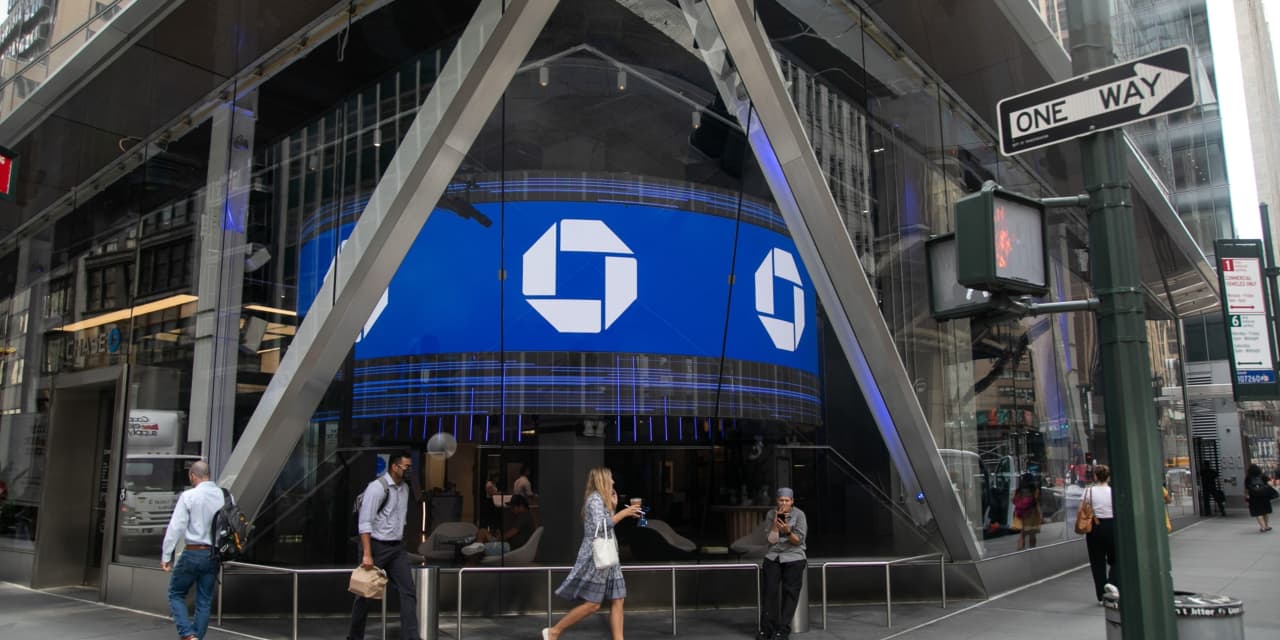When
JPMorgan
Chase posts earnings Friday morning, Wall Street won’t just be looking at the results from the nation’s largest bank, it will also be considering the broader health of the sector—but it’s important to remember that JPMorgan is an outlier.
Bank stocks have been punished this year as rapidly rising interest rates have caused many problems for lenders. At first, banks could delight in the fact that higher rates allowed them to earn more interest on the loans they issue. But high rates also have the tendency to keep potential borrowers on the sidelines and pressure current borrowers into delinquencies. The jump in rates has also meant savers now have more options for where to park their nest eggs and earn yield, putting pressure on banks’ funding costs.
So far JPMorgan (ticker: JPM) has been spared the worst of the effects of higher-for-longer interest rates. It was able to acquire the failed
First Republic Bank
from the Federal Deposit Insurance Corporation at attractive terms and JPMorgan’s stock has held up well. Shares of JPMorgan are up 9% this year while the
KBW Nasdaq Bank Index
(BKX) is down by 24%.
And the third quarter is shaping up to be a good one for JPMorgan. Analysts surveyed by FactSet expect that the bank will earn $3.95 a share on revenue of $39.6 billion. That amounts to a 20.4% jump in profits from $9.7 billion in the year-ago quarter. Much of the anticipated profit gains come from an expected 27% jump in net interest income to $22.3 billion.
While JPMorgan has largely been immune to the ills of the banking industry, it is well aware of the macroeconomic and geopolitical forces that have the potential to wreak havoc on the economy.
“I just think people will make a mistake to look at real-time numbers and not look at the future,” Jamie Dimon, chief executive at JPMorgan said last month at the Barclays Global Financial Services Conference. “And the future has quantitative tightening. We’ve been spending money like drunken sailors around the world, this war in Ukraine is still going on. Those are really big buts. To say the consumer is strong today, meaning you got to have a booming environment for years, is a huge mistake.”
Most recently, banks have had to contend with interest rates soaring ever higher. Last week, the yield on the 10-year Treasury note hit its highest level since 2007. Not only do higher rates lift funding costs for banks, there is another downside. When loan growth was low, banks invested excess capital into Treasury bonds and other securities. The value of those assets have tumbled as rates increased, meaning that the industry is sitting on $558 billion in paper losses, according to a recent report by the FDIC.
To be sure, most of those assets will be held to maturity, meaning the banks are unlikely to realize those losses, but being underwater—even if just on paper—is a limitation for banks, affecting things from issuing new loans to returning capital to shareholders. JPMorgan and other bank executives are expected to discuss this phenomenon on analyst calls over the next two weeks.
Citigroup
(C) and
Wells Fargo
(WFC) also post results on Friday.
Bank of America
(BAC) and
Goldman Sachs
(GS) share their results Tuesday of next week and Morgan Stanley (MS) posts on Wednesday.
Write to Carleton English at [email protected]
Read the full article here













Leave a Reply